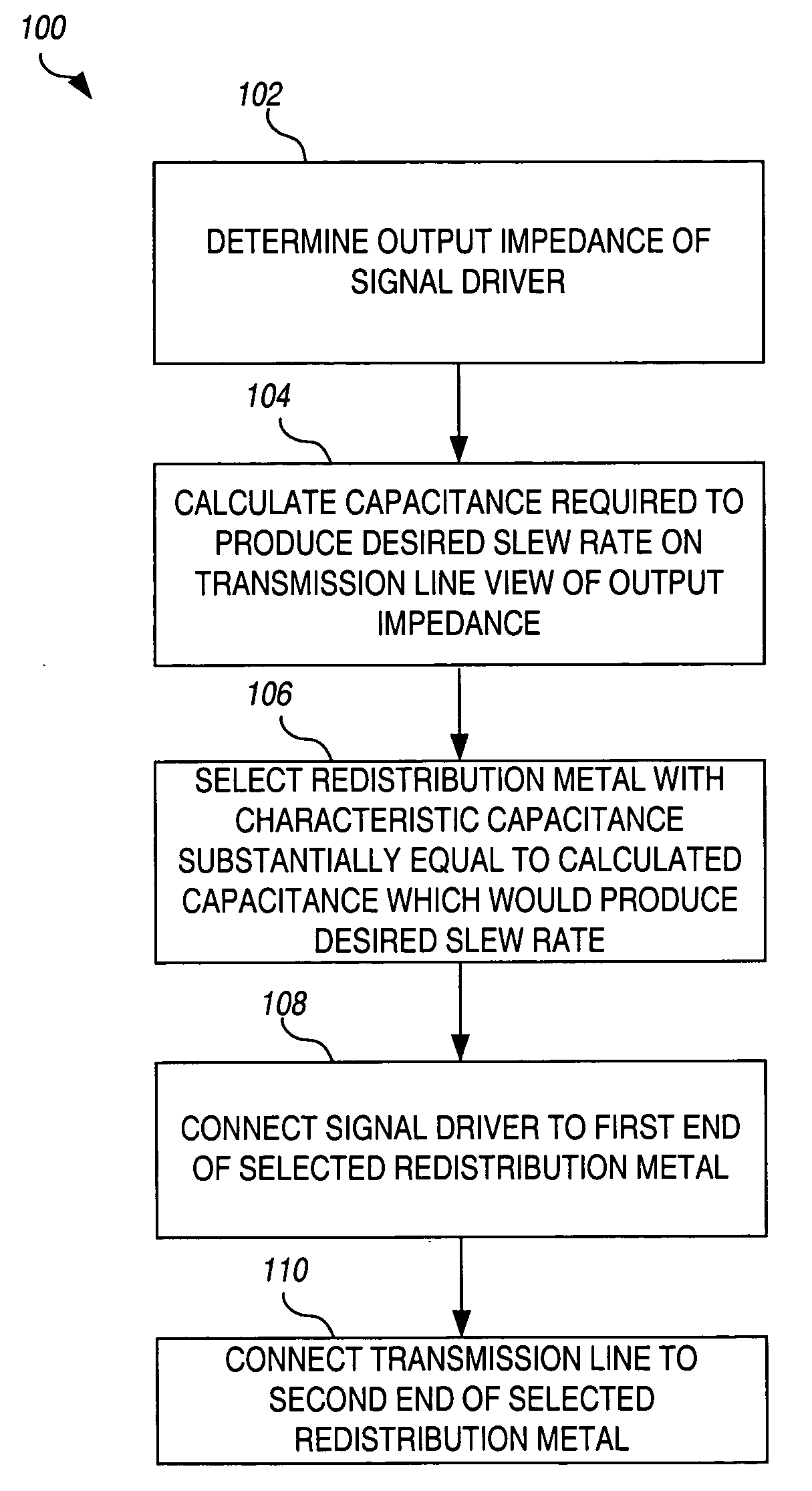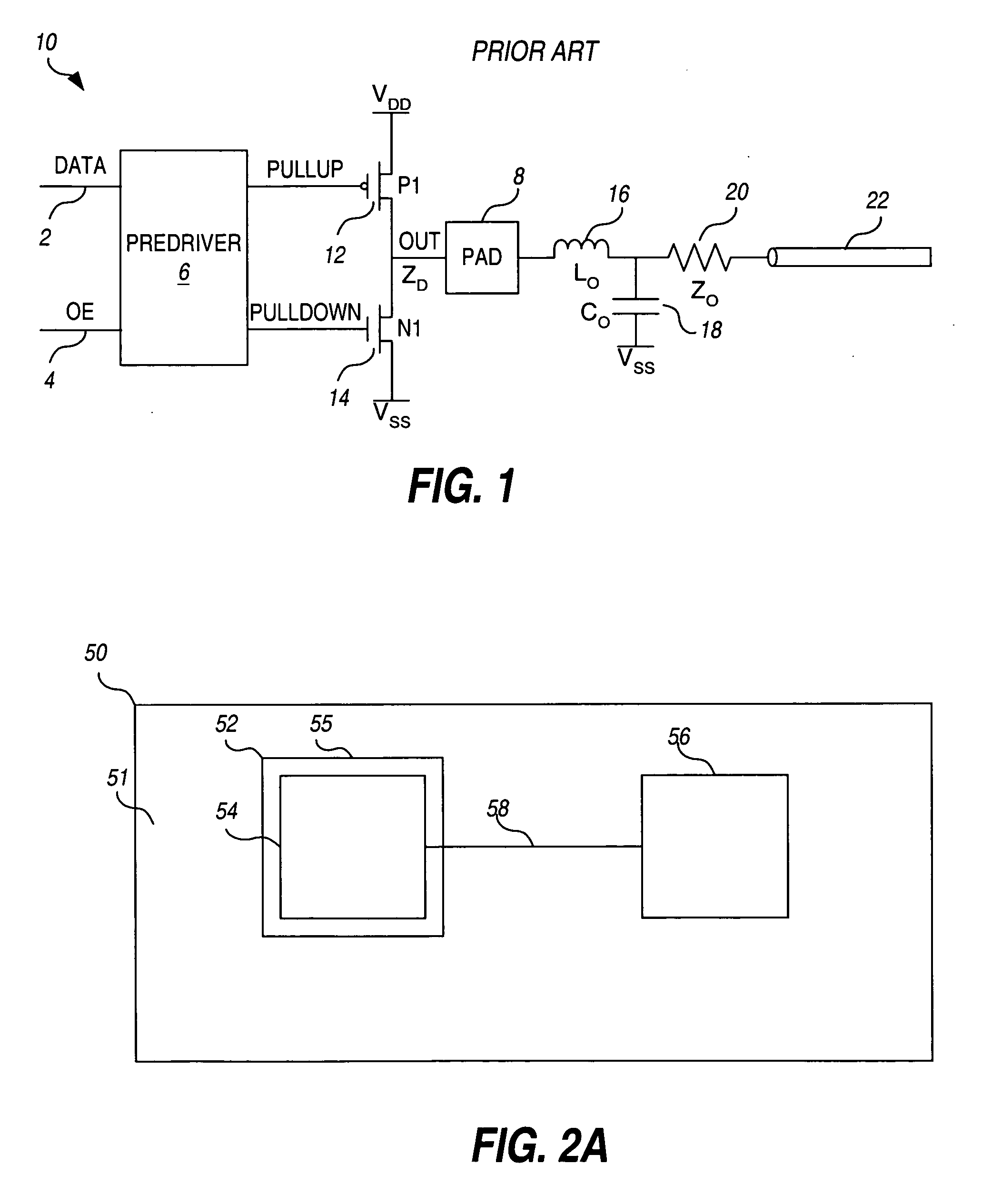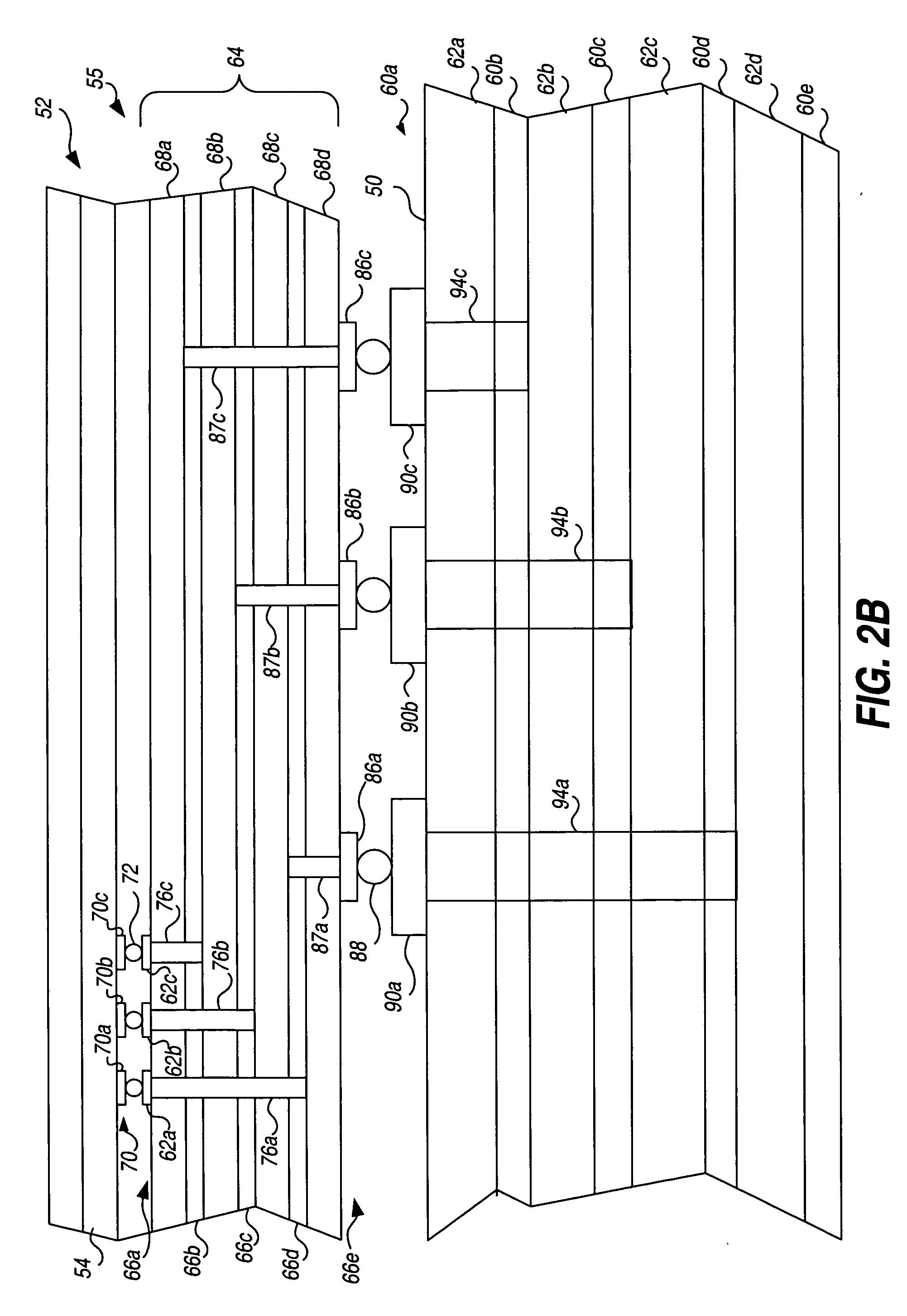Redistribution metal for output driver slew rate control
a technology of output driver and redistribution metal, which is applied in the field of integrated circuit devices, can solve the problems of forming hundreds of interconnects between a chip and a circuit board, limiting the performance achievable in an integrated circuit system, and requiring more complex devices to connect hundreds of interconnects, etc., and achieves the elimination of circuit complexity, cost, and associated chip real estate.
- Summary
- Abstract
- Description
- Claims
- Application Information
AI Technical Summary
Benefits of technology
Problems solved by technology
Method used
Image
Examples
Embodiment Construction
[0031] A novel technique for controlling the slew rate of output signals of integrated circuits using signal redistribution metal is described in detail hereinafter. Although the invention is described in terms of specific illustrative embodiments, it is to be understood that the embodiments described herein are by way of example only and the scope of the invention is not intended to be limited thereby.
[0032]FIGS. 2A-2C illustrate the connection of an I / O integrated circuit pad with a circuit board transmission line via redistribution metal. FIG. 2A is a top view of a conventional circuit board 50 having a first surface 51 with at least one integrated circuit 52 mounted thereon. Integrated circuit 52 comprises a die 54 packaged in a package 55 and disposed on first surface 51 of the circuit board 50. In the illustrative embodiment, integrated circuit 52 communicates with at least one electronic component 56 (such as another integrated circuit) via a conductive trace, or transmissio...
PUM
 Login to View More
Login to View More Abstract
Description
Claims
Application Information
 Login to View More
Login to View More - R&D
- Intellectual Property
- Life Sciences
- Materials
- Tech Scout
- Unparalleled Data Quality
- Higher Quality Content
- 60% Fewer Hallucinations
Browse by: Latest US Patents, China's latest patents, Technical Efficacy Thesaurus, Application Domain, Technology Topic, Popular Technical Reports.
© 2025 PatSnap. All rights reserved.Legal|Privacy policy|Modern Slavery Act Transparency Statement|Sitemap|About US| Contact US: help@patsnap.com



